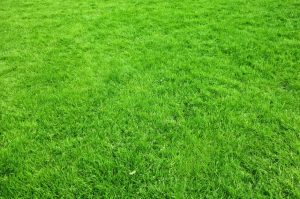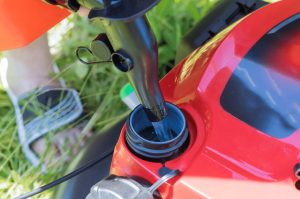Discover the sustainable secret to a lush lawn with our ultimate guide on using blood and bone fertiliser. This time-honoured, organic method enriches your turf with essential nutrients, fostering vibrant growth and robust health.
Dive into the benefits, application techniques, and eco-friendly insights for gardeners seeking a greener thumb.
Why blood and bone is used as lawn fertiliser
The traditional mix of blood meal and bone meal gathered from animals has been used by expert gardeners for decades. Termed as blood and bone, it’s known for its exceptional nutrient profile that provides vital plant nourishment.
Nevertheless, decipher why these two elements are important in fertilising our yards.
In a basic breakdown:
- High nitrogen content: The ‘blood’ component stands out due to its rich nitrogen content, an essential element grass requires for growth and maintaining its vibrant green hue.
- Valuable minerals: The ‘bone’ part offers phosphorus and calcium, which aids in strengthening plant roots and improving overall structure.
- Organic solution: As an organic lawn fertiliser, blood and bone ensure better soil health, promoting beneficial microorganisms necessary for root development and being safer around pets than synthetic alternatives.
In essence, utilising blood and bone empowers your lawn with a threefold benefit package, including improved turf colouration due to high nitrogen content, enhanced root development from valuable minerals in bones, alongside natural amendments to improve soil health. Unsurprisingly, it has steadily become one of the best lawn fertiliser options in Australia and beyond!
Understanding the components of blood and bone

The highly appreciated effects of using blood and bone on the lawn don’t come out of thin air. The stunning results can be traced back to the rich composition of these organic fertilisers. Understandably, diving into the nitty-gritty details will offer invaluable insight for better application techniques while achieving optimal health for your lawn.
Composition of blood as a lawn nutrient
Before casting judgment about using blood as an ingredient in yard work, let’s examine the distinct features that make it a vital component:
- High nitrogen content: Blood meal, essentially dried animal blood, is loaded with nitrogen; this element is integral to chlorophyll synthesis needed for photosynthesis.
- Fast-acting nutritional supplement: Due to its water-soluble nature, blood meal provides rapid nutrition to plants, allowing them immediate access to essential nutrients for improved growth and development.
There you have it; no dark magic involved! Good old science works miracles with Mother Nature’s most common elements.
Composition of bone as a lawn nutrient
Another integral part constitutes half “bone”, our hero product Blood and Bone. Its finely ground bones are commonly called bone meal within the gardening community.
Let’s break down what makes this otherwise repulsive-sounding product such an excellent resource:
- Phosphorus-packed: Bone meal is revered primarily because it boasts high phosphorus levels, which play vital roles in energy transfer and storage that support vibrant plant growth.
- Slow-release fertiliser: Unlike quick fixes that cause rapid spurts followed by lulls in grass development, bone meal acts more like a marathon runner – releasing nutrients gradually over time, resulting in steady and long-lasting results.
Safe to say, your beloved lawn will lap up the nourishment provided by the nutrient-rich composition of these components. Gardeners everywhere (novice or veteran) might find it advantageous to acknowledge that blood provides an instant nitrogen boost. At the same time, bones ensure gradual yet consistent support through their high phosphorus content.
Understanding these core differences will help optimise usage and reassure you that organic lawn fertilisers such as blood and bone showcase responsible gardening with sustainability.
For a deeper understanding of how Blood and Bone compare to other organic fertilisers like Dynamic Lifter, especially in the context of Australian gardens, consider reading this comprehensive guide on Dynamic Lifter vs Blood and Bone. It offers a detailed analysis of the benefits and uses of each, helping you make an informed decision for your lawn care.
Benefits of using blood and bone on a lawn
When it comes to lawn maintenance, applying nutrients is a no-brainer. If you’re considering using blood and bone fertilisers for your yard work, you’d be happy to know that several advantages are attached. Their organic nature makes them an ideal choice for sustainable gardening practices.
Increased nitrogen content for vibrant grass growth
The first perk that places blood and bone high up the preference ladder involves nitrogen’s generous delivery, paramount in every lawn’s health regime. The ‘N’ in NPK ratio stands for nitrogen – a vital nutrient for promoting lush, vibrant green growth in plants, including our beloved lawn grass.
Blood meal is rich in this element, having an average composition of 12-0-0 (NPK), effectively complementing its role. This naturally occurring plant fertiliser has the potency to revive dull grass back into radiant health by stimulating vigorous leaf growth necessary for photosynthesis.
Improvement in soil structure and fertility
Besides giving your lawn a well-deserved nutritional boost, using blood and bone as lawn fertilisers enhances soil fertility.
Bone meal, with its typical 4-12-0 (NPK) values, plays a crucial part here. It gradually decomposes, bolstering Phosphorus levels, which help transform lifeless dirt into thriving loamy soil without altering pH drastically like synthetic agents often do.
Moreover, these organic compounds add valuable structure to otherwise compacted or sandy lands through their gradual breakdown process—rendering soils more brittle, thus improving water retention remarkably, making it nutritionally receptive with each application.
Enhancing root development and nutrient absorption
Here comes another compelling virtue of feeding Hortico lawn fertiliser or any other high-quality blood and bone on the lawn. This magic combo doesn’t just nourish plants aboveground, but it also takes good care of the underground network.
It enables grassroots to flourish and expand their territory for seamless nutrient absorption. The trace minerals in these fertilisers contribute notably. More calcium from bone meal is pivotal in developing stronger cell walls, leading to robust root systems.
Progressively healthier roots mean enriched lawns play host to thriving microbial life beneath – encouraging natural nutrient recycling processes required for sustaining lush green health year-round. It is needless to mention, how strong roots make your turf more resilient against dry spells or pest invasions!
How to apply blood and bone on the lawn
Regularly feeding your lawn helps maintain its lushness and vivacity throughout the year. Blood and bone, a valuable organic blend of nutrients, can do wonders in turning around an undernourished garden when applied correctly.
Here’s how to effectively apply blood and bone on your lawn:
- Measure your lawn area: Determine the total square footage of your lawn to apply the correct amount. This prevents waste and ensures every part of your lawn gets the nutrients it needs.
- Calculate the fertiliser needed: Check the packaging for the recommended application rate and calculate the required amount based on your lawn’s measurements.
- Prepare the fertiliser: If the blood and bone are in pellet form, you may need to crush it into smaller particles for even distribution. You can use it as is if it’s already in fine form.
- Mark out sections: Divide your lawn into manageable areas using garden flags or string. This helps you track where fertiliser is applied and ensures complete coverage.
- Begin application: Starting with the first section, evenly across the area, apply the calculated amount of blood and bone. Use a side-to-side motion for hand-spreading or follow your spreader’s instructions for mechanical spreading.
- Cross-check application: After completing each section, take a moment to check for any missed areas or spots where the fertiliser might be too dense. Adjust as needed before moving on to the next section.
- Clean up: Once the application is complete, clean any excess fertiliser from hard surfaces like walkways and patios to prevent staining and runoff into waterways.
- Post-application care: Keep people and pets off the lawn for at least 24 hours to allow the blood and bone to settle and start being absorbed into the soil.
By incorporating these steps into your lawn care routine, you’ll ensure that your lawn is well-fed and that blood and bone are applied efficiently and responsibly.
Proper timing and frequency of application
Understanding the correct timing for application is crucial to maximising the benefits of blood and bone on lawns. Generally, it’s best implemented during your garden’s active growth phases. Candidates for these periods are usually in early spring, late summer or early fall when temperatures are moderate.
This is prime time for cool-season grasses that perform best in early spring or fall. Warm-season grass types come alive in late spring/early summer and are ready for fertiliser.
As per frequency, apply blood and bone NPK every 7-8 weeks during your lawn’s growing season. Avoid using it in high heat as it may burn the grass.
- Remember: Overdoing it defeats its purpose; moderation cannot be overstated here.
Techniques for spreading blood and bone evenly on the lawn
To ensure your lawn benefits from the nutrients in blood and bone fertiliser, it’s essential to apply it evenly.
Here’s how you can do it like a pro:
- Choose the right tool: Invest in a high-quality spreader for larger lawns to save time and ensure efficiency. For smaller lawns, hand-broadcasting is sufficient but requires more care to distribute evenly.
- Application technique: Start by applying along the edges of your lawn. Then, move inwards in a linear or serpentine pattern, slightly overlapping each pass to avoid missed spots. If you prefer, you can double back at half the initial dose to prevent over-fertilising.
- Watering after application: Water your lawn thoroughly after spreading the fertiliser. This helps dissolve the granules quickly so that the roots can absorb the nutrients more effectively.
- Consistency is key: Maintain a consistent application technique to prevent uneven growth and burning from over-fertilisation.
These steps will provide your lawn with a balanced feed that promotes healthy, lush growth. Remember, organic fertilisers like blood and bone are not only good for your lawn but also better for the environment.
Precautions and considerations when using blood and bone on lawn
Blood and bone fertiliser is undoubtedly an effective solution towards a greener and healthier lawn. Nevertheless, without care and understanding, the wrong application could lead to unintended negative effects on your precious turf.
- Overfertilisation: An overflow of nutrients from excess usage of organic fertilisers such as blood and bone NPK can potentially cause ‘fertiliser burn’. This results in your lawn’s brownish discolouration and slowed grass growth.
- Salt buildup: Excessive quantities of any fertiliser can lead to salt accumulation in your soil, negatively impacting water retention capacity.
- Increased weed invasion: If not carefully spread, certain areas may have a higher concentration of fertiliser, leading to imbalanced nutrition across your lawn, further inviting unwelcome weeds.
- Negative impact on soil pH: Irregular applications might disturb the delicately balanced soil pH level, altering nutrient availability for grass roots.
The best way around these hazards is to clearly understand your soil’s nutrition requirement through regular testing before applying any fertiliser.
Key factors to consider when choosing blood and bone products for your lawn
The first element that requires your attention is the quality and source of the fertiliser’s blood meal and bone components.
- Origin: Bood and bone meals are derived from cattle and pigs. It is beneficial if these animals are raised in controlled environments without administering hormones or antibiotics, which could contaminate their by-products. Check labels or consult with suppliers to ensure safe sourcing.
- Processing and preservation: Be aware of how the blood and bone meal has been processed. High-quality products undergo stringent sanitisation processes, like heat treatment, to kill off any pathogenic organisms. Furthermore, preservation should be such that it keeps nutrients intact without adding harmful preservatives.
Remember, as an informed consumer, your aim should always be supporting ethical sourcing practices while ensuring maximum efficacy for your lawn’s health.
Organic vs synthetic options for blood and bone fertilisers
Deciding between organic or synthetic options for blood and bone fertiliser can affect your lawn and wider environmental issues.
- Organic fertilisers: These naturally sourced materials are typically free from harmful chemicals. They improve soil structure over time due to their slower nutrient release rate. However, being natural does not necessarily equate to being sustainably sourced or produced.
- Synthetic fertilisers: Conversely, synthetic fertilisers provide quick-releasing nutrients, boosting rapid growth, but may degrade soil structure over time. Environmental concerns arise, considering their manufacturing process often involves nonrenewable resources.
It’s important to decide between these and gauge what works best in your circumstances. For instance, the organic route could be optimal if you’re maintaining a small lawn and have a keen interest in sustainability.
Ultimately, finding an ideal balance between achieving lush lawns through blood and bone fertilisers while still being conscious of sourcing practices is key. Be aware of your choices, understanding that every decision contributes towards building a more sustainable and flourishing environment.
Alternatives to blood and bone fertilisers for lawns
Opting for alternatives to blood and bone on lawns is equally plausible if you search for other organic or synthetic solutions. The market brims with numerous options that cater to different lawn-care needs, and it’s important to acknowledge these alternatives as they each have unique selling propositions.
Organic alternatives
Organic fertilisers are acknowledged for their chemical-free contributions to soil health. Here are a few organic substitutes:
- Compost: A blend of kitchen waste, grass clippings, and well-rotted manure can compose an efficient compost mix. This straightforward solution not only diverts household waste from the landfill but also improves your lawn’s soil structure.
- Seaweed extracts: Seaweed extracts contain micronutrients vital for plant growth, allowing you to feed your lawn naturally.
- Fish emulsion: Made from decomposed fish remnants, this option carries plenty of proteins that provide nutrients like nitrogen, which indeed helps with vibrant grass growth.
Synthetic alternatives
When dealing with synthetic fertilisers, professionally blended NPK lawn fertiliser formulas often offer balanced nutrient profiles:
- Water-soluble granules: These granules dissolve quickly in water to deliver immediate nutrients to your lawn.
- Slow-release pellets: Balanced with Nitrogen (N), Phosphorus (P), and Potassium (K), slow-release pellets provide benefits over several months owing to the easy availability of nutrients while preventing excess dissolution due to rainfall.
While selecting organic materials such as blood and bone fertiliser or synthetic options boils down, individual preferences only combine both treatments simultaneously, which may overload your turf with unnecessary richness, causing nutrient imbalances.
Lastly, regardless of preference, be sure to synthesise each decision considering environmental impact and the continuous depletion of natural resources. Hence, educating ourselves about various alternatives is the first step towards becoming a sustainable lawn caretaker.
Conclusion
In conclusion, blood and bone is a superior, organic choice for gardeners aiming to cultivate a thriving lawn. Its rich nutrient profile promises immediate verdancy and long-term soil health. By embracing this natural fertiliser, you’re choosing a path of sustainability and environmental responsibility.
Remember, the key to success lies in mindful application—balance and timing are your allies. As we continue to explore the depths of organic gardening, blood and bone fertiliser remains a testament to the harmony between nature’s offerings and our horticultural practices. May your lawn always reflect the care and knowledge invested into it.
Looking for more information on blood and bone? Learn why it is one of Australia’s best fertilisers for growing strawberries!






